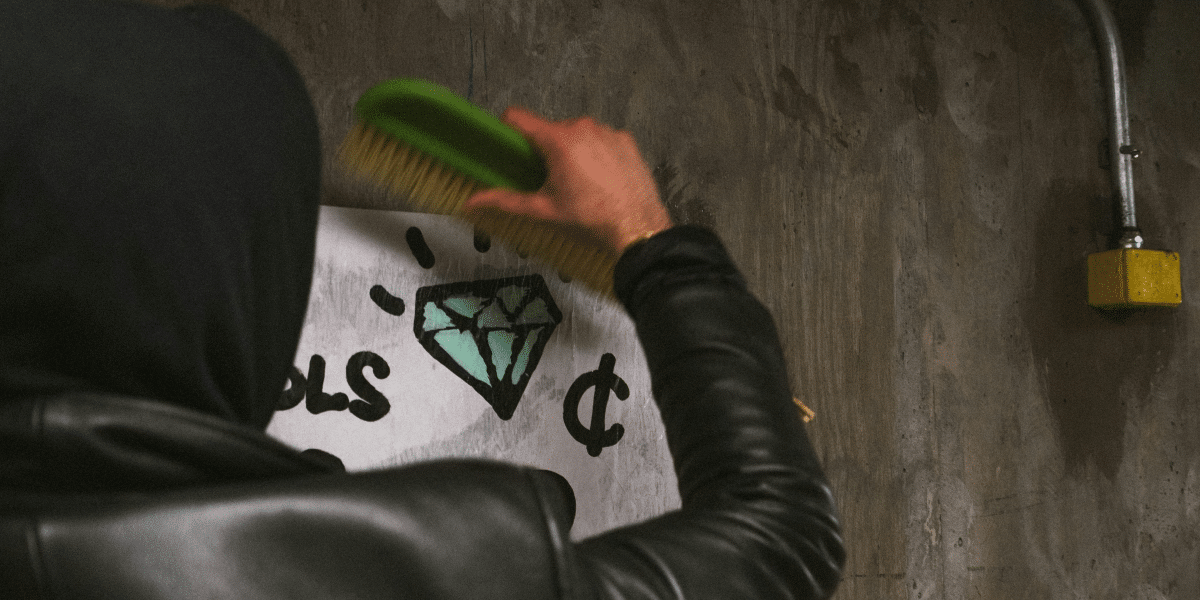Diamond painting is a popular craft where you place tiny resin diamonds on a sticky canvas to create a sparkling artwork. It’s a relaxing hobby that appeals to both beginners and seasoned crafters. Choosing the right diamond painting kit is crucial for an enjoyable experience, as understanding the different options available ensures you pick a kit that matches your preferences and skill level.
What is a Diamond Painting kit?
Painting by Diamonds kit is a craft set that includes a pre-printed canvas with a color-coded chart, tiny resin rhinestones (called “diamonds”), an applicator pen, a tray, and a wax pad. The process involves placing the diamonds onto the adhesive canvas according to the chart, creating a sparkling mosaic artwork. This activity combines elements of cross-stitch and paint-by-numbers, offering a relaxing and stress-relieving experience.
Types of Diamond Painting Kits
When selecting a diamond painting kit, understanding the different types available can help you make the premier choice for your project.
Full Drill vs. Partial Drill
- Full Drill: The entire canvas is covered with diamonds, resulting in a more detailed and complete image.
- Partial Drill: Only specific parts of the canvas are covered with diamonds, highlighting certain elements of the design.
Square vs. Round Diamonds
- Square Diamonds: These fit closely together with no gaps, creating a seamless, mosaic-like finish.
- Round Diamonds: Easier to place, they leave small gaps between diamonds, giving the artwork a softer appearance.
Pre-Printed vs. Custom Designs
- Pre-Printed Designs: Ready-made patterns that you can start immediately, available in various themes and styles.
- Custom Designs: Personalized patterns where you can turn a photo or specific image into a diamond painting, offering a unique and personal crafting experience.
Key Factors to Consider Before Buying a Diamond Painting Kit
When choosing a diamond painting kit, several important factors can influence your crafting experience. Considering these elements and diamond painting accessories will help ensure you select the finest kit for your needs.
- Size of the Canvas: Larger kits offer intricate details but require more time and effort. Smaller kits are quicker to complete and are ideal for beginners or those with limited time.
- Difficulty Level: Kits come in various difficulty levels. Beginners should start with simpler designs, while more experienced crafters can opt for complex patterns.
- Design: Choose a design that you are passionate about. There are numerous options, from iconic paintings to nature scenes.
- Quality of Materials: Look for high-quality diamonds and canvases. Good adhesion and vibrant colors enhance the final product.
- Type of Drills: Diamonds, or drills, come in round and square shapes. Round drills are easier to place, while square drills fit together without gaps, offering a polished look.
- Customization Options: Some diamond painting kits allow you to create custom designs from your own photos, adding a personal touch to your artwork.
- Included Tools and Accessories: Ensure the kit includes essential tools like an applicator tool, wax pad, sorting tray, and tweezers for a smooth crafting experience.
By considering these factors, you can select a diamond painting kit that matches your skill level, interests, and available time, ensuring a rewarding and enjoyable crafting experience.
Quality of the Diamond Painting Kit
The quality of your diamond painting kit plays a crucial role in your crafting experience and the final outcome of your project. Here are the key components to consider:
-
Canvas Material:
The canvas serves as the foundation for your diamond painting. A durable and clear canvas ensures that the pattern is easy to follow and can withstand the pressure of placing diamonds without tearing or losing its shape.
-
Diamond Quality:
The diamonds, or drills, are the main components of your artwork. High-quality diamonds are uniform in size and shape, which helps them fit together seamlessly, creating a polished finish. The shine of the diamonds also adds to the visual appeal, so choosing a kit with vibrant and reflective drills can enhance the overall look of your piece.
-
Adhesive Quality:
The adhesive on the canvas is vital for keeping your diamonds in place. A strong adhesive ensures that the diamonds stick firmly and stay put, even after handling or over time. Weak adhesive can lead to diamonds falling off, which can be frustrating and diminish the quality of your finished piece.
-
Tools Included:
Kits come with standard tools like a pen, tray, and wax. These tools are essential for placing the diamonds on the canvas accurately. The pen allows for easy diamond placement, the tray helps organize and pick up diamonds, and the wax enables the pen to pick up the diamonds efficiently.
-
Additional Tools:
Some kits may include extra tools, such as tweezers or a multi-placer pen, which can speed up the process and make it easier to handle small diamonds. These additional tools can enhance your overall experience, especially for more intricate or larger projects.
By paying attention to these quality factors, you can ensure that your diamond painting kit provides a smooth and enjoyable crafting experience, resulting in a beautiful and lasting piece of art.
Budget Considerations
When purchasing a diamond painting kit, it’s essential to consider your budget and understand how different factors influence the overall cost. Here’s what to keep in mind:
-
Cost of Diamond Painting Kits:
The price of diamond painting kits can vary widely depending on the size of the canvas, the quality of materials, and the complexity of the design. Larger canvases and high-quality kits typically cost more but offer a more detailed and satisfying crafting experience. Simpler and smaller kits are usually more affordable, making them a good choice for beginners or those on a tight budget.
-
Value for Money:
Balancing cost with quality is key to getting the premier value for your money. A more expensive kit might come with better-quality materials, a more durable canvas, and extra tools, all of which can enhance your crafting experience. Consider whether the additional cost justifies the benefits, ensuring you’re not just paying for a brand name but for a kit that offers a superior experience.
-
Potential Hidden Costs:
Beyond the initial purchase, there might be additional costs to consider. Some kits may require extra tools or accessories, such as storage containers for diamonds, a light pad for better visibility, or replacement adhesive. These extras can add to the overall cost, so it’s important to account for them when setting your budget.
By understanding these budget considerations, you can choose a diamond painting kit that aligns with your financial plans while still providing a fulfilling and enjoyable crafting experience.
Preparing for Your First Diamond Painting
Setting Up Your Workspace:
A well-organized workspace can significantly enhance your custom diamond painting experience. Here are some tips:
- Choose a dedicated space: Find a place where you can leave your project undisturbed.
- Good lighting: Natural light is ideal, but a strong desk lamp can also work well.
- Surface protection: Cover your work surface with a cloth or newspaper to protect it from glue spills.
- Storage: Have containers ready to sort your diamonds by color or symbol.
- Comfort: Ensure you have a comfortable chair and good posture to avoid strain.
Time Commitment:
The time required for a diamond painting project varies based on its size and complexity.
- Small, simple designs: Can be completed in a few hours or days.
- Large, intricate designs: May take weeks or even months.
- Pace yourself: Don’t feel pressured to rush. Enjoy the process.
Managing Expectations:
Setting realistic expectations will help you enjoy the diamond painting experience.
- Start small: Begin with a smaller project to get a feel for the process.
- Break it down: Divide the canvas into sections to make it less overwhelming.
- Take breaks: Avoid eye strain by taking short breaks.
- Embrace imperfections: Diamond painting is a hobby, not a competition. Enjoy the journey!
By following these tips, you’ll be well-prepared to embark on your first diamond painting adventure.
Common Mistakes to Avoid in Diamond Painting
Diamond painting has captured the hearts of many with its relaxing nature and stunning results. However, even seasoned crafters can make some common missteps. Let’s explore some pitfalls to avoid as you embark on your diamond painting journey.
Choosing the Wrong Size:
- Start small: Beginners should choose smaller canvas, simpler designs to get a feel for the process.
- Consider your time: Larger, more intricate pieces require a significant time commitment.
- Assess your skill level: Be honest about your abilities and choose a project accordingly.
Ignoring the Drill Type:
- Square vs. Round: Square drills provide a fuller, more complete look, while round drills offer a classic, sparkling effect.
- Special shapes: Some kits use unique shapes for added dimension. Consider your preference.
Skipping Research
- Compare Kits: Look for reviews, images, and details about the canvas, diamonds, and tools.
- Read Instructions: Familiarize yourself with the kit’s contents and steps before starting.
By avoiding these common pitfalls, you can set yourself up for a successful and enjoyable diamond painting experience.
Diamond painting is a delightful hobby that offers relaxation and a sense of accomplishment. By understanding common pitfalls and making informed choices, you can enhance your experience and create stunning masterpieces. Remember, the key to enjoying diamond painting is to have fun! Experiment with different techniques, don’t be afraid to make mistakes, and importantly, savor the process. Happy crafting!
Published by: Holy Minoza

















